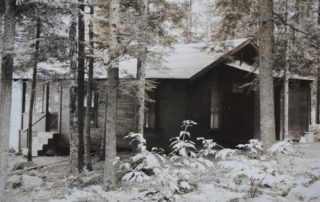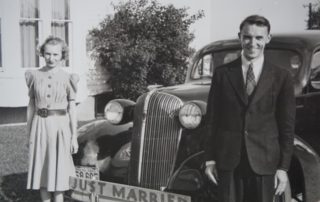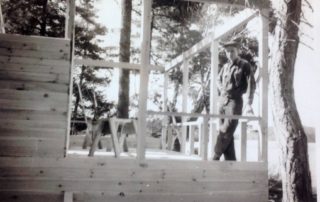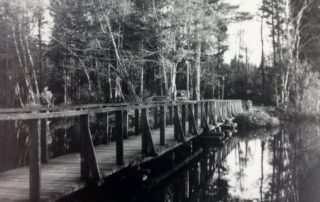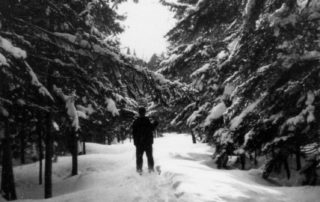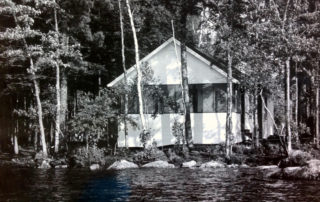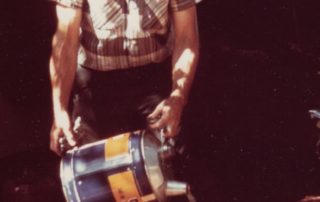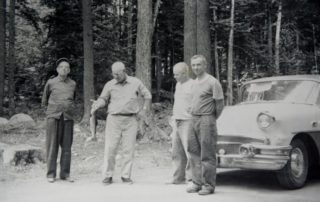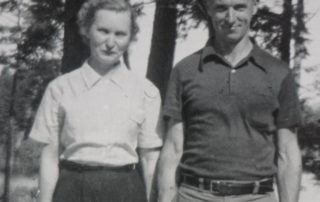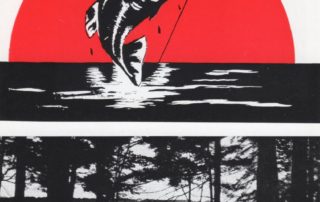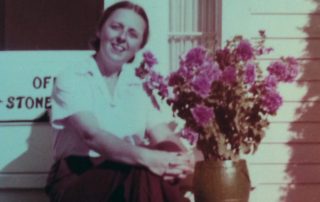History of Stone’s Camps
All have a special fondness for the area and appreciate the uniqueness of the neighborhood. We all wish to honor the legacy created by the Stones that endures today.
A RICH HISTORY SINCE THE 1920s
by Jenny Stone
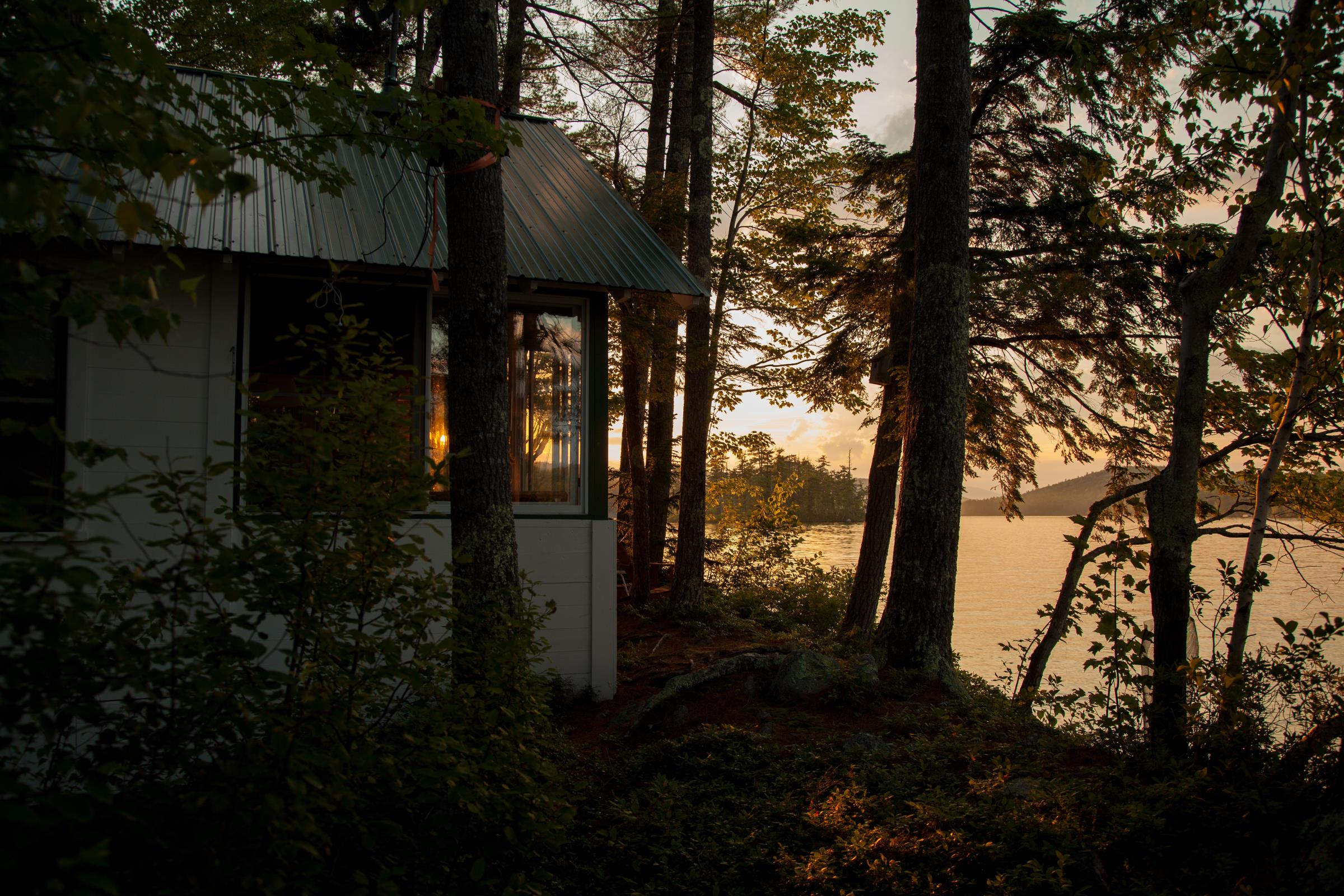
They were called “housekeeping cottages”, marketed by my entrepreneurial grandfather, Frank Stone, to be “where happy vacationers, free from routine and formality, could unite the comforts of home with the unmarred ruggedness of the Maine outdoors”. The snug little green cabins tucked into the woods along Highland Lake in Bridgton, Maine, boasted full kitchens, bathrooms (eventually indoors), wood fireplaces, two bedrooms and a living room with knotty pine interiors, and screened-in porches – upscale design for the 1920’s and 30’s. But along with the fresh milk delivered from his farm, ice harvested from the frozen lake in the winter and free use of his handmade boats, my grandfather also managed to deliver an element of magic. The vacationers not only had enjoyable stays, but many developed a deep love of the area, made memories, found and nurtured friendships, and raised families who subsequently brought their own children to visit. Frank and his son, Charles, and daughter, Joanna, created not only a successful business that lasted generations, but also managed to touch the lives and hearts of so many campers.
People planned their years around their vacation to Stones’ Camps and counted the days until the next visit. Competition for booking the perfect weeks was fierce. Reservations were not accepted until Jan 1, and the phone rang nonstop on New Year’s Day. My father and mother, Charles and Wilma, and my aunt and uncle, Joanna and Ralph, poured their lifeblood into the enterprise for about 50 years. The legacy endures even today. Stone’s Camps, per se, is no longer in business, as the cabins were sold to individual owners, and my parents, aunt and uncle have passed away. The colony is now Stones Lakeside Association, an HOA of individual owners. But it is still beautiful and special. The memories live on. This website was created as a memorial to that legacy, to record some of the history and to be a platform that others could share remembrances, anecdotes, and photos – both historical and present day.
THE STONE FAMILY
In the early 20th century, the Stone family began something that would live through many families across many generations.
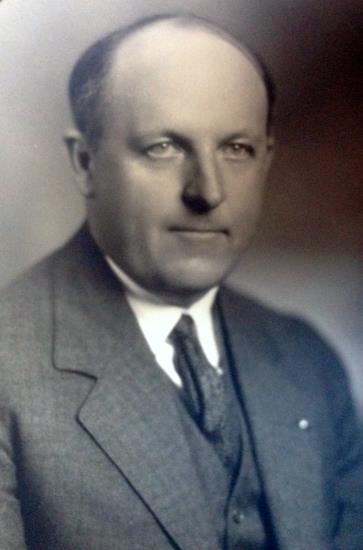
Frank M. Stone
b 1882 – d 1961
Founded Stone’s camps on land granted from his father, Marshall. Built 12 cottages and ran the rental business from the 1920’s til his death in 1961.
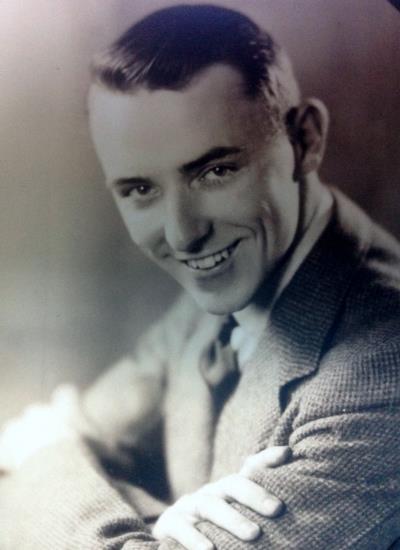
Charles T. Stone
b 1915 – d 2006
Son of Frank Stone. Built 8 cabins in the mid 1940’s – early 1950’s on land deeded from his father. Rented those plus two of Frank’s cottages granted to him. Co-owner with wife, Wilma, he rented the ten cottages from 1946 until the early 1980’s.

Joanna Stone Benjamin
b 1913 – d 2009
Daughter of Frank Stone. Rented 10 cabins with her father from the late 1950’s until his death. She continued the business, working with husband, Ralph, until the early 1980’s.
My grandfather, Frank Stone, inherited a farm and large 1000 acre parcel of woodlands from my great-grandfather Marshall Stone. Frank had little interest in farming, however, and worked as a logger, a sheriff, a state legislator and an entrepreneur. In the latter role, he built the first camp circa 1914 and then built the majority of the cabins in the 1920’s, with increasing help from his young son, Charles. The original prototype (now Sylvia Dowst’s camp) was deemed to be too far out of the way and was sold. Building on the nascent tourism industry in Maine and capitalizing on increased access via rail and car, Frank built a colony of 12 housekeeping cabins. Guests fished, swam, traveled around the lake in Frank’s handmade boats, and played horseshoes late into the night. Kids played in Frank’s barn. Softball games played against competing camp colonies were held in the fields. Cabin rental in the 1930’s was $25/month, the deposit $5. An extra boat set one back $3. Word started to spread about Stone’s Camps.
During the latter part of the thirties until 1941, son Charles continued to assist Frank with the camps. Charles married a local girl, Wilma Flint (making her Wilma Flint Stone). Wilma was a bookkeeper for a local car dealership. During World War II Charles got a job welding the hulls of Liberty ships at the East shipyard in South Portland. He longed to return to Bridgton to build his own business.
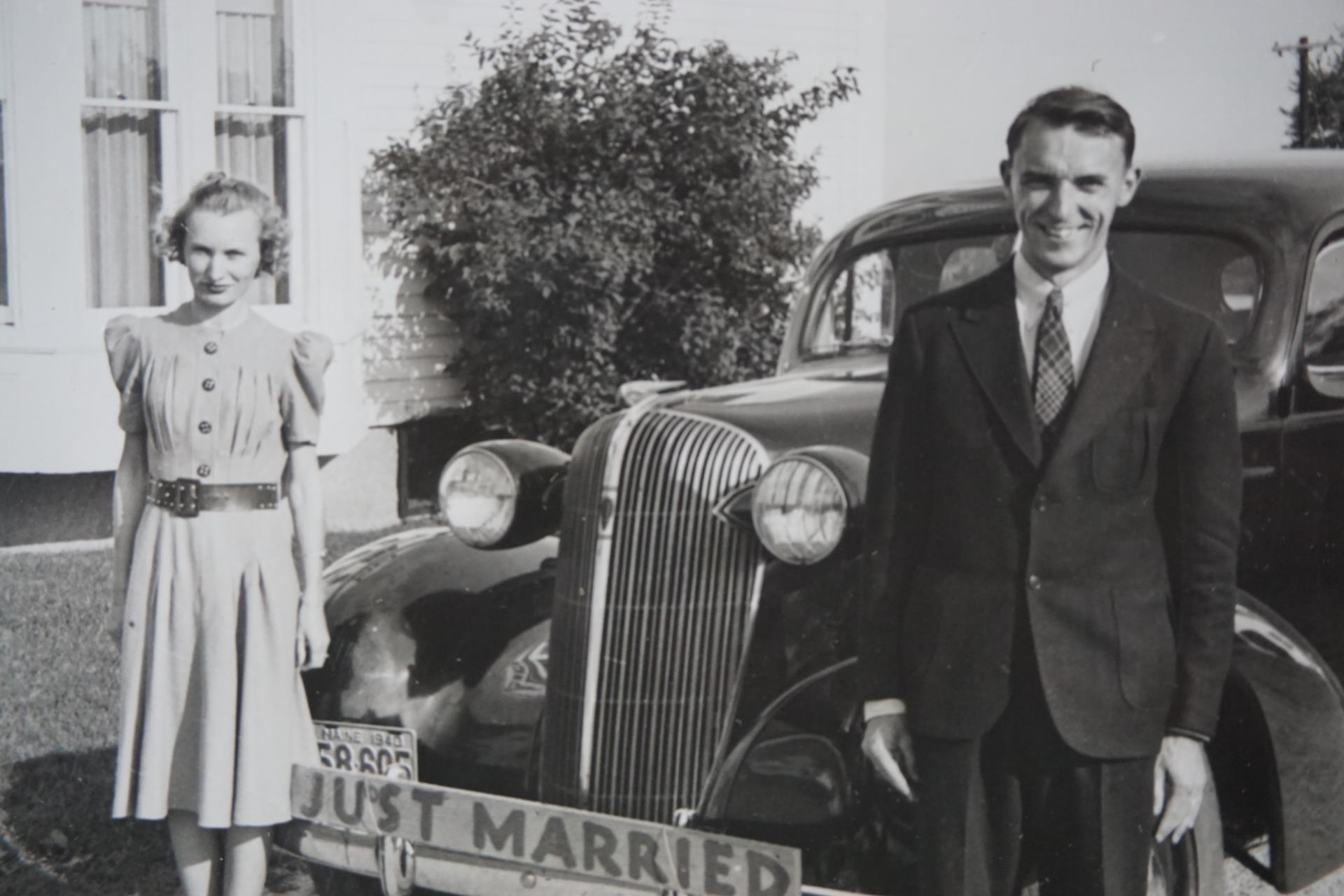
Wilma and Charles Stone on their wedding day, 1940
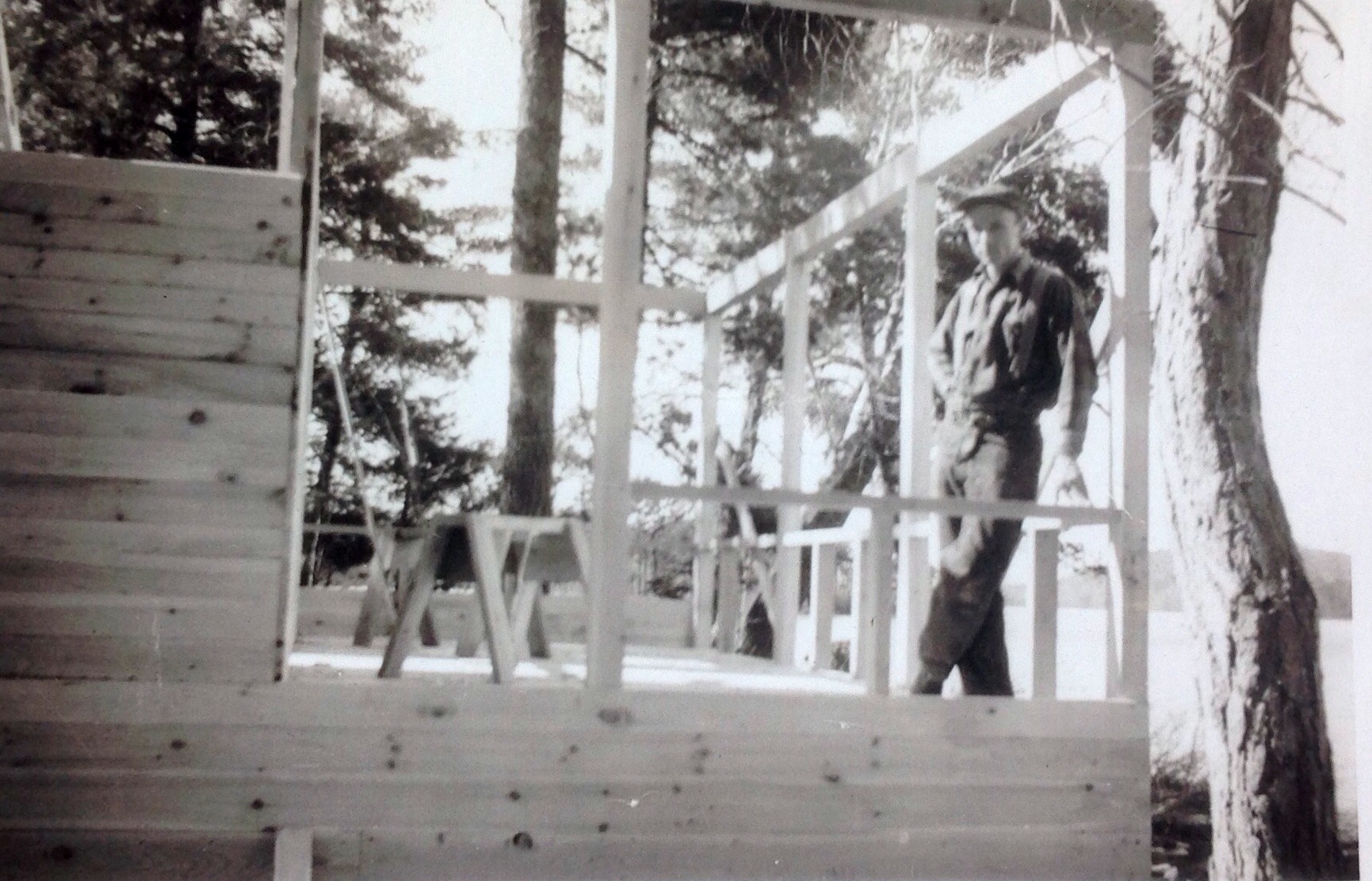
Charles Stone building cabin #102, 1946
After the war ended, Charles got his chance. In November, 1945, Frank sold a small island a little west of his camps to Charles and Wilma. In the spring of 1946, Charles got to work, felling the pine trees on the land, taking the logs to a local sawmill where they were milled into lumber, and then brought the lumber back to build his first two camps, which would become #101 and #102, the two on the western (left) side of the causeway. Charles designed and built them himself, with help from Frank and several other workers. Oh, and he had to build the causeway to the mainland – wooden at first and then changed to cement in the mid-fifties. The camps were barely ready in time. The first guests, the grandparents of Tom Doviak (proprietor and chef at present day Tom’s Homestead Restaurant), had to walk over the still wet cement steps on a wooden plank. After the summer guests left in the fall of 1946, Charles wasted no time and built cabin #103, just to the right of the causeway. Construction of cabin #104 followed in the fall of 1947. The latter was the smallest of the cabins, due to the constraints of the land. Frank sold Charles and Wilma another parcel of land in December 1947 and in the fall of 1948, Charles built #105, the most westerly cabin on the mainland (which I own today). Over the next few years, three more cabins were built (# 106-108). Frank transferred ownership in 1957 to Charles and Wilma of what would be cabins #109 & #110 (now owned by the Magg family).
Concurrently, Frank continued to rent 10 of the original cabins. His daughter, Joanna, went to school at Boston University, got a teaching degree, came back to Maine and managed the cabins with her father. In 1955, she married a New Jersey native, Ralph Benjamin, who used to stay at the cabins with his aunt. They spent a year in Jersey City with Joanna teaching during that time. They then moved back to Bridgton to manage the cabins with her father. She took over his business when he passed away in 1961.
Both Charles and Joanna had ten cabins to rent each under the name of Stones’ Camps. These were actually two separate businesses that shared the same name.
THE CAMPS
The camps have a rich and wonderful history which are proudly displayed through our historical photography.
For about 50 years, the daily life of the Stones was shaped by the ebb and flow of the daily tasks of running the cabins. Spring meant cleaning up the debris from winter storms, repairing any damage, cleaning the pollen from the cabins, bringing the boats from the boathouses, putting in the docks and turning on the water. All hands were on deck in the summer, our prime time. Camps had to be cleaned every Saturday and Sunday, on schedule, to standards that would make Hilton and Marriott wither in defeat. The checklist was detailed, each cleaner knew his/her job and failure was not an option. The sparkling clean camp was a trademark of Stones’. Outboard motor rentals demanded meticulous and constant maintenance. My most enduring mental portrait of my Dad is seeing him dressed in his baggy green work pants and suspenders, working on an outboard Evinrude motor on the well-worn saw horse in front of the storehouse. He would happily chat with the campers in his undiluted Maine accent, while changing a spark plug or mixing that day’s supply of oil and gas. Concurrently, my aunt Joanna could always be found at the distinctive white farm house, tending her breathtaking flowers, filling out fishing licenses and in full cleaning gear on the weekends. Uncle Ralph was a fixture in front of the large storehouse or in the big black truck with the Stones’ Camps logo. The fall brought more repairs, the sequential painting of one cabin every 10 years, cleaning, taking in docks, turning off water. Winter brought indoor repairs and painting, such as oars and wooden boats. A heavy snow meant Dad had to shovel off the cabins to prevent roof collapse. That meant snowshoeing down the otherwise impassable camp road. P90X training looks like a gentle workout compared to snowshoeing back up the hill, in old style snowshoes, after a solid day of backbreaking shoveling, with the winter sun going down. No Mainer was happier than my Dad when snowmobiles first came out in the early 70’s.
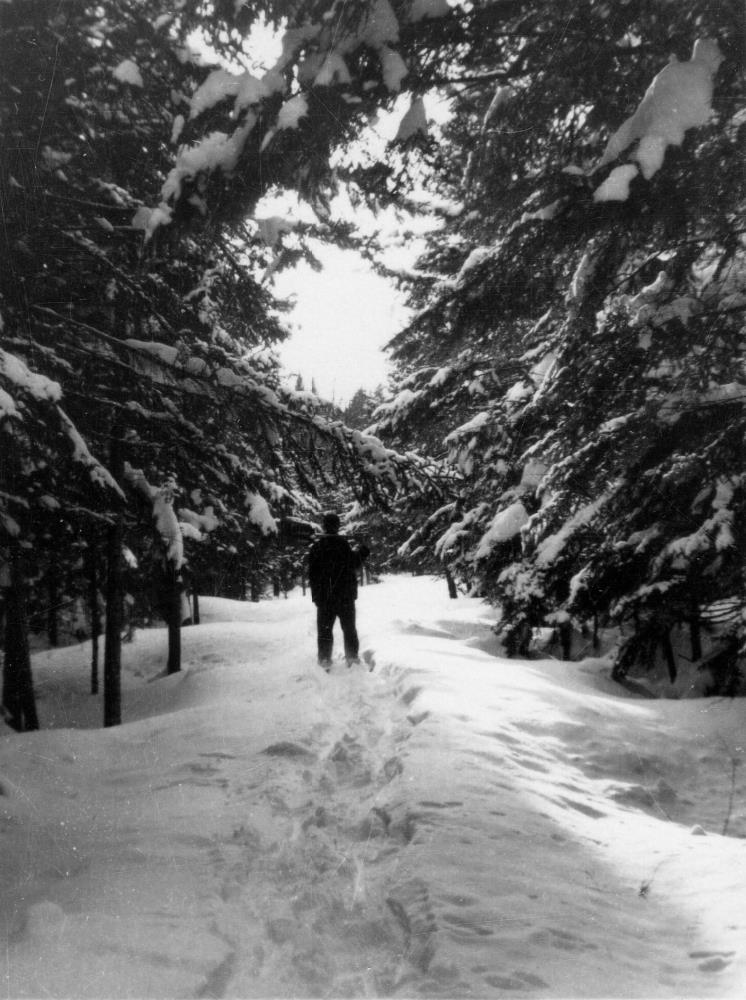
Charles Stone snowshoeing camp road, circa 1952
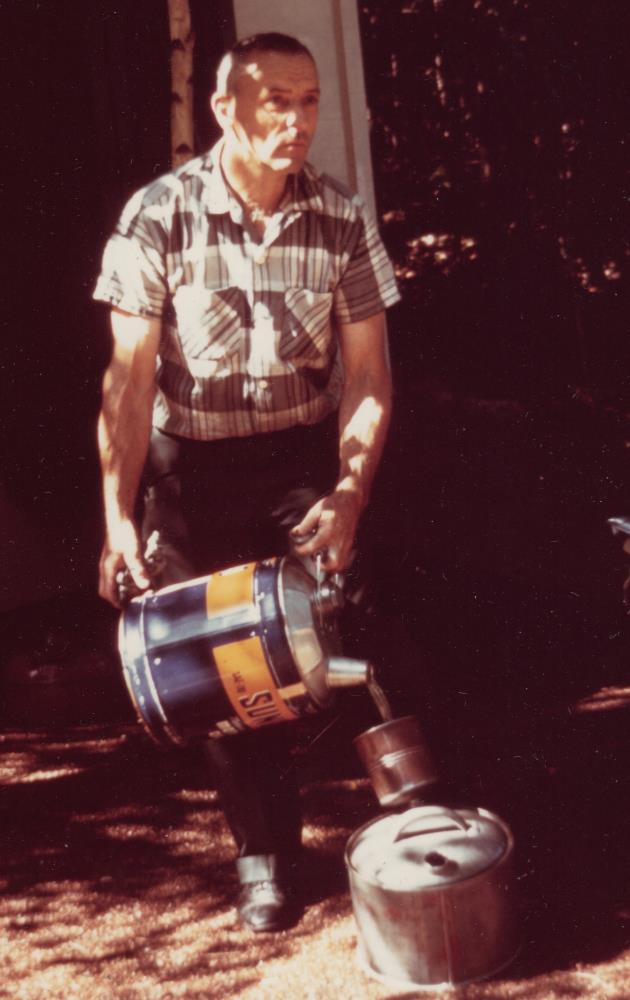
Charles Stone in front of storehouse
The majority of the renters came from southern New England, New York, New Jersey, and Pennsylvania. Families returned year after year, many times coordinating vacation weeks with friends. Days were excitedly counted down until at last the car backed out of the driveway and headed north to Maine. The right turn down Route 93, the ritual stop at Joanna’s farmhouse, the final approach down the camp road just added to the delicious joy that vacation had officially started. Young boys and girls swam, fished, learned to run an outboard motor, explored the rocks and coves, caught frogs, fed the chipmunks and then grew up and brought their own children to do the same. Many became lifelong friends with other campers and with the Stones. Some might as well have been formally adopted into the family.
In the late seventies, the physical labor and responsibility of cabin upkeep started to become harder for the aging camp-owners. With no heir apparent willing to take over the business, the changing economic realities became inescapable. The cabins were gradually put on the market for sale to individual owners. Joanna sold the first one in 1978 and my Dad soon followed suit. By the early 80’s all but one was sold. My parents kept #105 and continued to rent the one cabin to some of their long-time campers for another 15 years. In 1997, they transferred ownership of this to me, ending an unforgettable era.
The individual owners created a homeowner’s association in 1982 called Stone’s Lakeside Association. Some kept the cabins in their original configurations, others chose to remodel and expand the design. Some tore the originals down and created newly designed summer homes. Some spend much of the summer there, others rent for some or all of the season. Some were former renters from the Stones, and others came for the first time when purchasing the cabin. All have a special fondness for the area and appreciate the uniqueness of the neighborhood. We all wish to honor the legacy created by the Stones that endures today.
Sources:
“Lakeside Good Life Endures”, Portland Press Herald, March 7, 2002, pp 1F, 8F.
State of Maine Registry of Deeds
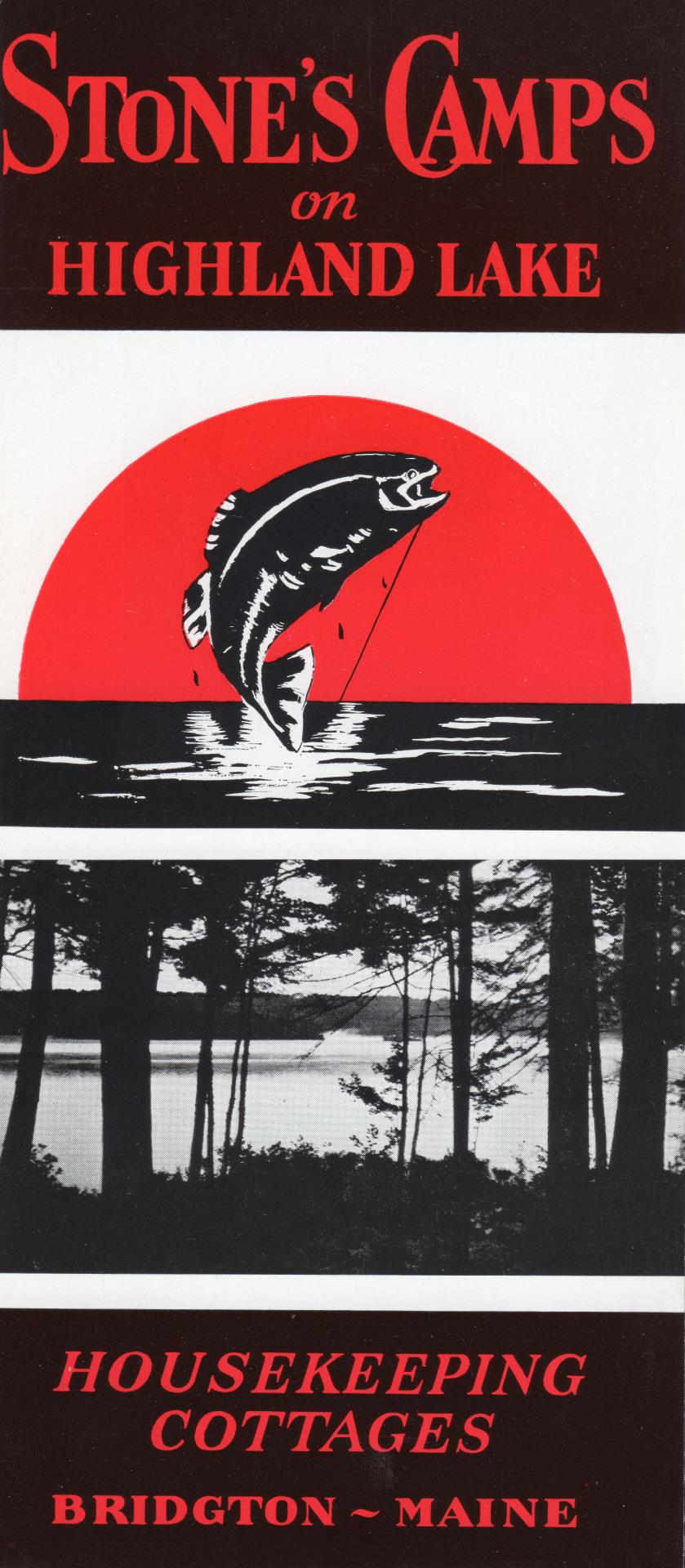
Stone’s Camps brochure, logo designed by Wilma Stone
